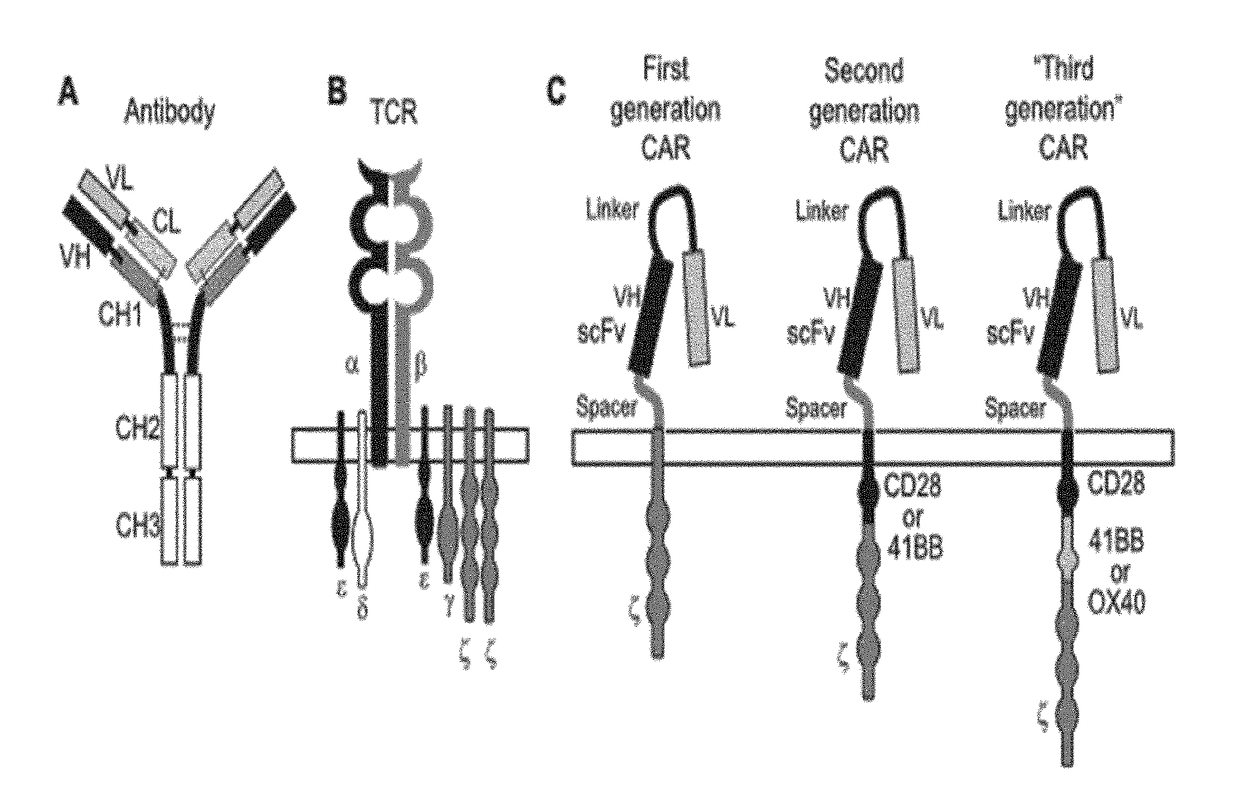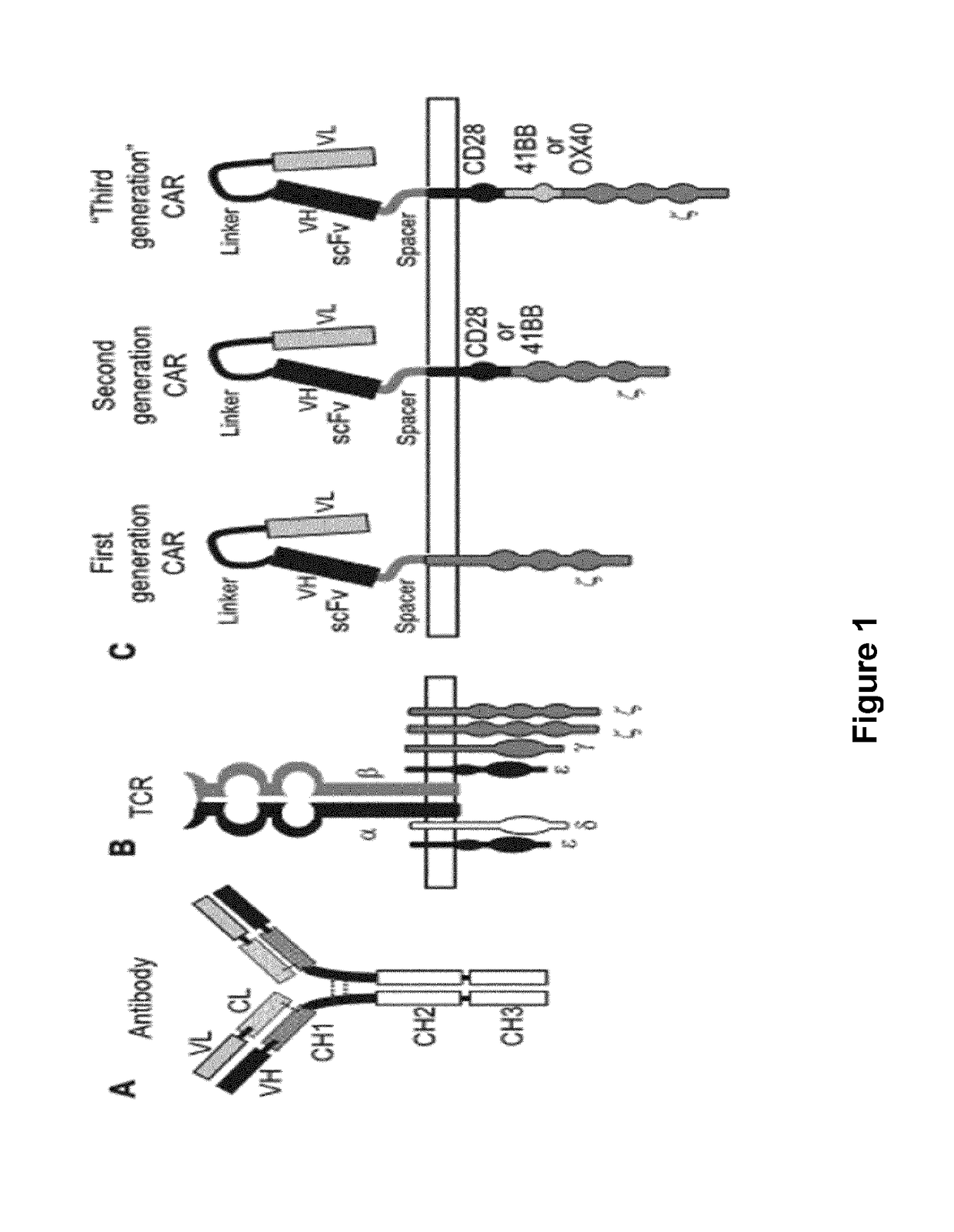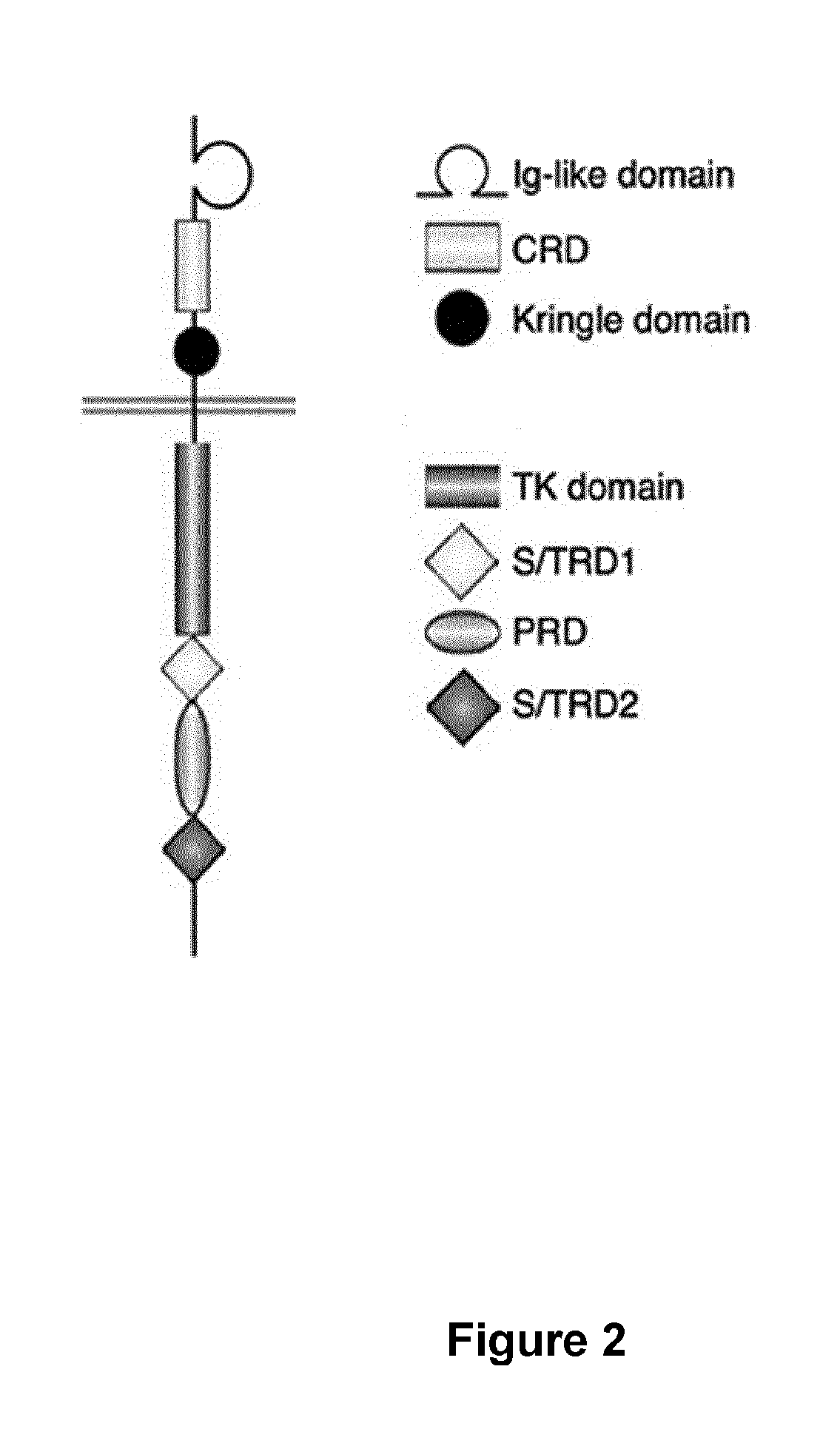Ror1 (ntrkr1) specific chimeric antigen receptors for cancer immunotherapy
a chimeric antigen receptor and cancer immunotherapy technology, applied in the field of chimeric antigen receptors, can solve the problems of not being able to expand to any antigen, not being able to provide prolonged expansion and anti-tumor activity in vivo, and rarely yielding complete responses
- Summary
- Abstract
- Description
- Claims
- Application Information
AI Technical Summary
Benefits of technology
Problems solved by technology
Method used
Image
Examples
example 1
Selection of ROR1-Positive and -Negative Cell Lines
[0207]To identify cell lines expressing different cell surface expression levels of ROR1, 12 human cell lines were analysed by flow cytometry using the Qifikit (Dako) and the anti-human ROR1 mAb clone 2A2 (see materials and methods). Nine of these cell lines had previously been described in the literature to be positive for ROR1 at the mRNA or protein level (Table 10).
TABLE 10Cell lines reported to be positive for ROR1 in the literaturecell linedescriptioncell typeMDA-MB-231adherentbreast adenocarcinomaPC-3adherentprostatic adenocarcinomaMDA-MB-468adherentbreast adenocarcinomaHs746Tadherentgastric carcinomaNCI-H1993adherentnon-small cell lung cancerHT-29adherentcolorectal adenocarcinomaA549adherenthuman lung adenocarcinomaCal51adherentbreast carcinomaJeko-1suspensionMantle cell lymphoma
[0208]Flow cytometry results indicate that MDA-MB-231 (ATCC® HTB-26), MDA-MB-468 (ATCC® HTB. 132), Hs746T (ATCC® HTB-135) and HT-29 (ATCC HTB-38) cel...
example 2
Generation of Anti-ROR1 scCARs
[0212]A set of 18 ROR1-specific scCARs of 2nd generation (FIG. 1C) were created and tested in the following experiments.
[0213]They result from the fusion of the following building blocks of Tables 1-2:[0214]scFvs from murine origin or humanized form from D10, G6, G3, H10, 2A4 or 1C11;[0215]one spacer: human FcγRIIIα, CD8α or IgG1 hinge;[0216]the transmembrane domain of human CD8α and the costimulatory domain of human 41BB;[0217]the activation domain of human CD3
[0218]Different scFv were used in the scCARs to generate receptors of different binding affinities and different epitope specificities.
[0219]The mAbs D10 and G6 target the 3′ Ig like region and linker region between the Ig like domain and the CRD domain of ROR1 (FIG. 2)
[0220]The mAbs G3, H10 and 2A4 target the IgG like region of ROR1 (FIG. 2)
[0221]The mAb 1C11 targets the CRD domain of ROR1 (FIG. 2).
[0222]Three spacers of different length (16 AA, 45 AA and 231 AA) were used in the scCARs to try t...
example 3
In Vitro Testing of Anti-ROR1 scCARs
[0223]The anti-ROR1 scCARs designed as previously were tested in human primary T cells using a two-step screening method presented in FIG. 6.
[0224]In the first step of the screening process, primary human T cells previously activated for 4-5 days with anti-CD28 / CD3 beads and IL-2 were electroporated with mRNA encoding the 18 anti-ROR1 scCARs presented earlier. One day post electroporation, scCAR expression was assessed by flow cytometry and western blot, and scCAR-modified T cell activity was assessed by measuring T cells degranulation. The scCARs that were detected by western blot and that induced significant specific degranulation of T cells (≧20%) upon coculture with at least one ROR1 positive cell line were selected to pass through the second step of the screening process.
[0225]In the second step of the screening process, primary human T cells previously activated for 11-12 days with anti-CD28 / CD3 beads and IL-2 were electroporated with mRNA e...
PUM
| Property | Measurement | Unit |
|---|---|---|
| temperature | aaaaa | aaaaa |
| polypeptide structure | aaaaa | aaaaa |
| resistance | aaaaa | aaaaa |
Abstract
Description
Claims
Application Information
 Login to View More
Login to View More - R&D
- Intellectual Property
- Life Sciences
- Materials
- Tech Scout
- Unparalleled Data Quality
- Higher Quality Content
- 60% Fewer Hallucinations
Browse by: Latest US Patents, China's latest patents, Technical Efficacy Thesaurus, Application Domain, Technology Topic, Popular Technical Reports.
© 2025 PatSnap. All rights reserved.Legal|Privacy policy|Modern Slavery Act Transparency Statement|Sitemap|About US| Contact US: help@patsnap.com



